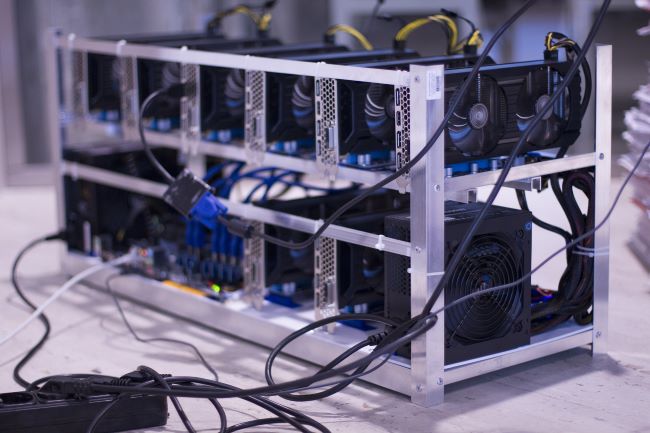Flow Modeling for Cryptocurrency Mining
By Kevin Linfield, Ph.D., P.Eng., P.E.
Bitcoin. Ethereum. Dogecoin. Tether. Do flow engineers care about crytocurrencies? YES! But... maybe not in the way you are thinking. Ponder data centers, clean rooms, grow rooms, and warehouses. The HVAC systems for all of these facilities is a complex system which often requires the removal of heat and the addition of dry cool air. The same principles apply to data miners for various cryptocurrencies. Whether you are utilizing thousands of GPUs for Bitcoins or CPUs for Bytecoin, the power required, and hence the heat released, is enormous.
Some might scoff and think that cryptocurrency is just a passing fad, but as of March 2022 the global crypto market cap is US$1.93 trillion. Number-crunching "mining" facilities are taking over former industrial spaces. And all of these systems need flow modeling to ensure the heat buildup doesn't cause these miners to shut down. Proper cooling is crucial to efficiently mining cryptocurrencies.

Preventing Overheating in Crypto Mining Facilities
Whether air or liquid cooled, this heat has to be removed quickly and efficiently so these computers can continue to run as fast as possible. As the temperatures increase, the hashrate goes down. Overheating electronics and processing units lead to automatic shutdowns and if these machines are not cranking, money is not being made.
Internal Flows
Data miners such as the Bitmain S19 are often housed in former industrial buildings, warehouses, or even transformed shipping containers. The latter, often called Pods or Mining Containers, feature some HVAC challenges that benefit greatly from flow modeling. Often, in all of these facilities, outside air is drawn in through hoods or louvers (featuring air filters), conditioned (if necessary), circulated through the miners, and exhausted from the room via fans and vents. The purpose of flow modeling is to help determine whether there are areas within the building that are likely to result in miner performance degradation. Using Computational Fluid Dynamic and laboratory modeling, ASC can examine the flow through and pressure drop across the banks of miners. Flow results are plotted and analyzed as contours of velocity, temperature, and pressure with the main goal to ensure adequate cooling throughout the miner banks. Sometimes layout changes are required. Other times, changes to the fans or HVAC ducts will mitigate hot spots.
External Flows
Venting hot air from mining facilities is required, but companies need to pay attention to the resulting exhaust plume. Under certain conditions, hot exhaust air from one building will be drawn into the inlet of another building, reducing the cooling capacity and subsequently mining performance. Dispersion analysis for this type of situation can be performed using both computer and laboratory flow modeling techniques. The numerical approach, CFD, utilizes sophisticated software and high-speed computers to predict the flow patterns and mixing including velocities, pressures, temperatures, and exhaust gas re-ingestion. Laboratory modeling and wind tunnel testing are another technique for flow analysis and design. Large fans are used to direct flow over scale models of the buildings, while smoke injection, tracer gas injection, and other techniques are used to visualize and assess exhaust heat flow patterns.
------------
ASC was founded in 1975 using flow models to solve industrial problems. Who knew that 50 years later we'd be using those same modeling techniques to work with a variety of crypto mining companies? And to answer the unasked question - ASC currently does not accept cryptocurrencies for flow modeling studies! If you would like to learn more about using CFD to improve your industrial crypto mining processes, contact us today.
Learn more :
